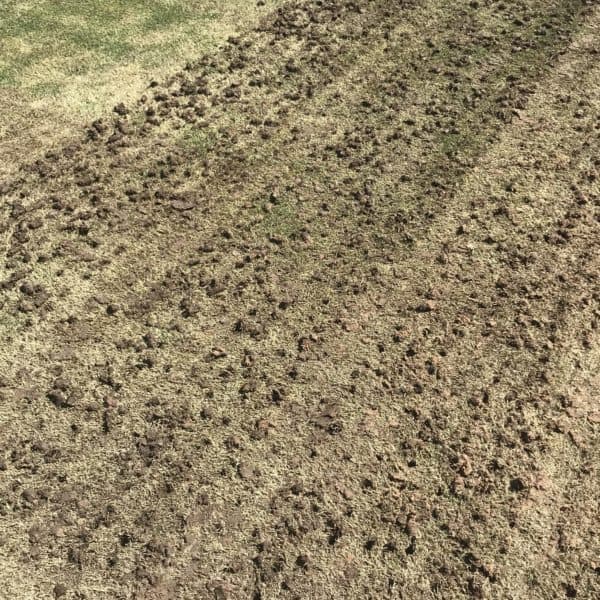
Shallow Rennovation (Buffalo & Cool Season)
Cool season and Buffalo renovation
The main purpose of lawn renovation is to remove excess thatch (organic build-up) and stimulate fresh, healthy growth. Renovation must be done when the growing conditions suit your specific grass type to ensure recovery and optimal results.
Pre-Renovation Preparation
- Winter Maintenance – If you’ve been running a winter care program, your lawn will be better prepared to recover quickly. Even cool season grasses, which grow well in cooler weather, still benefit from consistent feeding and care over winter.
- Timing by Soil Temperature
- Cool Season renovation (C3) Grasses – Begin renovation when soil temperatures reach around 15°C, with active growth between 10°C and 25°C (ideal 20°C).
- Buffalo renovation (Warm Season) – Renovate when soil temperatures are around 18°C, with active growth between 20°C and 32°C.
- Have Everything Ready – Fertiliser, soil amendments, topdressing material (if required), and equipment should be on hand before starting.
The use of our renovation bundle or Start me up bundle is the ideal start. - 2 weeks before your renovation, plan on giving it one last feed, to ensure what plant matter remaining is stored with some nutrition to aid recovery.
RENOVATION
Now onto the Cool season and buffalo renovation itself. It can be quite daunting if you haven’t done it before. And it will feel wrong, but it is all for the best.
- Scalp
This is a very low mow, usually leaving about 25% – 50% (closer to 50% for buffalo) of the usual lawns’ height. This removes a lot of old growth. You want to go below your ideal finishing height.
TIP: for buffalo do a test area first, this will allow you to see how much you are removing as removing too much will not allow the grass to come back. - Dethatch/ scarify.
Adjust the height accordingly, you don’t want to be going too low with Cool season grasses, as this can severely damage them not allowing it to recover.
If your intention is to do a deep renovation due to thatch build up, you will need to re-seed. - Aeration
This time of year, it is worth pulling cores, this will remove the last bit of thatch. And allows for better access to the soil for water, nutrients and potentially new soil to come in. You can either remove the cores or mulch them back in with a rotary mower. If you don’t want to pull cores, you can simply solid tine to aerate. - Soil Amendments.
Now that the soil is open this is your chance, if doing so, to get some soil amendments in. Changes to pH, any nutrient deficiencies, can all be addressed here. - Top Dressing
Now is the time to bring new soil in if you are. Fill in the aeration holes and address any low spots. No more than 10-15mm should be applied. Again, the more you do the longer recovery will take.
NOTE steps 4 & 5 are interchangeable. - Seeding(Optional)
If you have a patchy lawn or did a deep scarify you will need to consider oversowing. You would also want to slightly rake in some grooves or put another light covering of soil over the top of the seed. - Watering and Fertiliser.
The fun part! This is where we can apply our granular renovation fertiliser, such as 2spec Accelerate or if seeding 2spec Establish. And apply our Liquid soil amendments in the Ultimate Soil Amendment Pack and water them all in together.
Renovation after care.
In the week, immediately following the renovation, apply lots of little watering cycles to keep the top of the soil damp, this will help relieve stress and allow the lawn to bounce back. Once we see it starting to come good, we can get back the watering to our normal routine.
At about the 4–6-week mark after renovation is the last step of the process. And that is when the renovation fertiliser has run out of steam, and it is time to back it up. With our normal maintenance fertiliser, the choice depends on whether you have a longer lawn or a shorter lawn.
